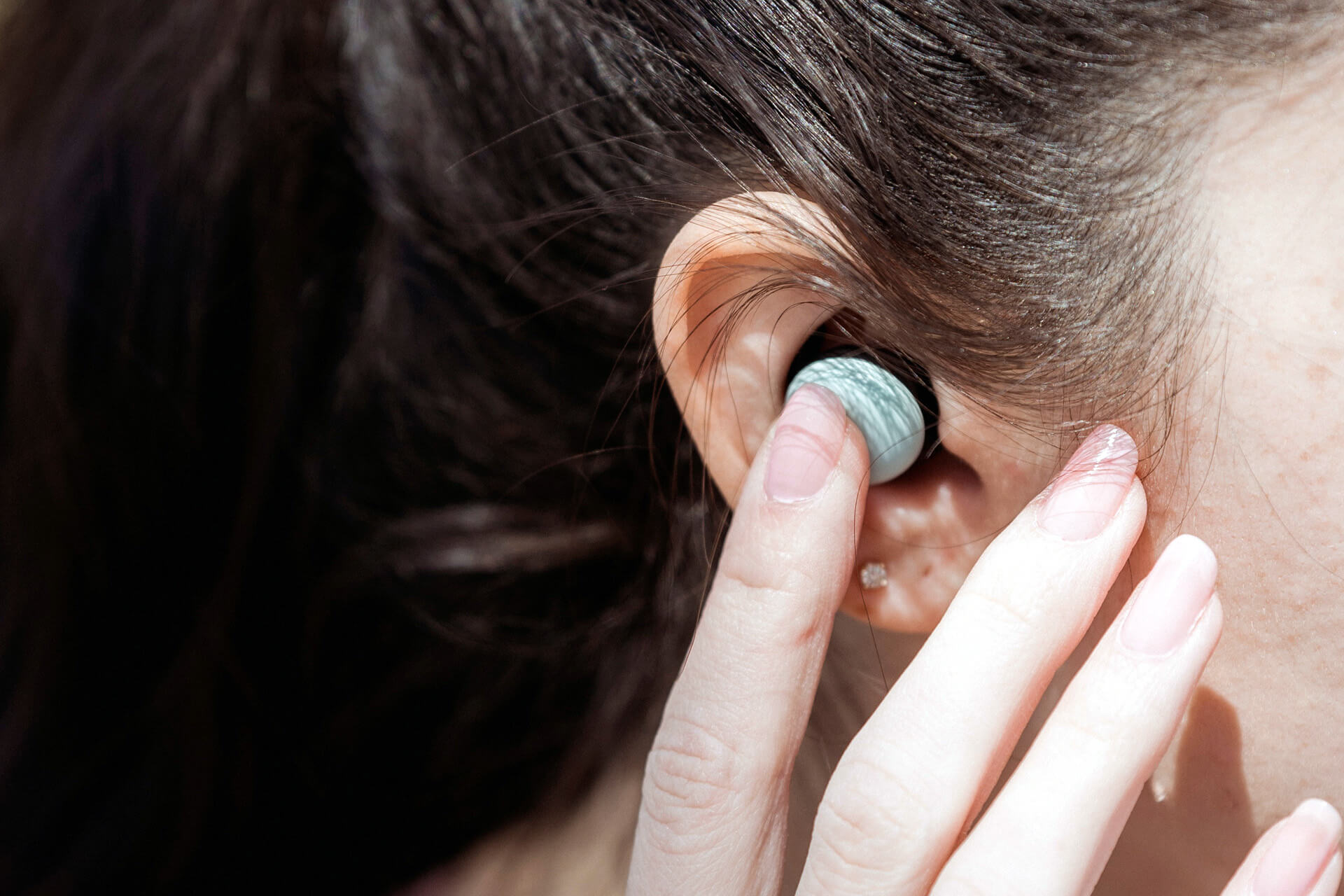The majority of those who suffer from hearing loss have “binaural” hearing loss, which affects both ears. However, some people could only lose hearing in one ear. Either at birth or later in life, this might manifest.
Table of Contents
How Hearing is Affected by a Hearing Loss in One Ear (Single-Sided Deafness)
The brain uses both ears to increase hearing quality and range. Sometimes it’s difficult to tell where a sound is originating from, and by determining which ear hears a sound first, thanks to the process known as sound localization or directional hearing, your brain can determine where a sound is originating from. When just one ear is capable of hearing well, it may be challenging to pinpoint the source of the sound.
In loud settings, it can be difficult to hear. Selective hearing, or filtering out unhelpful stimuli, is a function of your brain, and without the help of a second ear, this is very difficult to do. A person with SSD (Single-Sided Deafness) may find it difficult to concentrate on a single speaker in a loud setting.
Due to all of the aforementioned factors, single-sided deafness puts an increased strain on the brain’s cognitive functions, which might make it difficult to multitask. Your brain takes longer to concentrate on the current job the more noise there is around. You can miss a lot of what is being said if you’re simultaneously trying to listen to someone else talk.
“Head Shadow” Phenomenon
The capacity to recognize the sound’s source based on differences in the level of sound heard by each of our ears is what gives us the perception of sound. The Head Shadow Effect is the name given to this phenomena.
Wavelengths of lower frequency sounds, which can reach 1000Hz, are often longer. Because of this, one can identify the source of these noises thanks to the 0.2 to 0.8 millisecond temporal differential between the ears.
High-frequency noises are never heard because of the way sound waves move, which prevents them from “bending” over to the side of the functioning ear, and according to Cleveland Clinic audiologist Sarah Sydlowski, “the skull effectively functions as a barrier, stopping sounds from the poorer hearing ear from reaching the better hearing ear.”
Speech may wind up seeming muffled as a result because high-frequency sounds like “s” and “f” cannot be heard.
Causes of Sudden Loss of Hearing in One Ear
You should always act swiftly if you or a loved one has unexpected hearing loss of any degree. Hearing loss in one ear can progress quickly, and as it progresses, you can start to experience diplacusis, or “double hearing.”
Your chances of making a full recovery are increased the sooner you seek therapy. About 15% of the time, single-sided deafness develops when hearing cannot be restored without medical intervention.
It can result from a variety of factors, including but not restricted to:
- Meniere’s illness
- Auditory neuroma
- Bacterial or viral infections
- Physical ear injury as well as brain injury
- Cardiovascular system issues
- Hereditary or genetic illnesses
- Combination of the factors above
Single-sided Deafness Treatment
A hearing aid could be all that’s required for persons with mild to moderate hearing loss to magnify the noises they can’t hear.
Although severe to profound single-sided deafness is frequently irreversible, it can occasionally manageable with equipment worn in the working ear. In order to determine the source of your hearing loss, an audiologist will conduct a hearing test, interview you, and suggest a bone-anchored hearing system, CROS, or BiCROS treatment.
Contralateral Routing of Sound (CROS)
For those who have near-total hearing loss in one ear but normal hearing in the other, CROS hearing aid systems are available. A CROS recognizes sounds coming from the deaf ear and sends them to the healthy ear.
Wearing a gadget on each ear is necessary for this: The user wears a transmitter in the non-functional ear, and in the working ear, a receiver that analyses sound and transmits it via a microphone. The person’s hearing is comparatively normal, therefore the sound is not amplified beyond usual.
Bilateral Microphones With Contralateral Routing of Signal (BiCROS)
For persons with bilateral hearing loss, or hearing loss in both ears, BiCROS hearing aids (bilateral microphones with contralateral routing of signal) are used.
A receiver in the ear with greater hearing and a microphone that takes up sounds from the ear with limited to no hearing make up a BiCROS system. The sounds transmitted by the microphone are processed by the ear with better hearing.
The noises that are transferred from the side without hearing to the ear with normal hearing are amplified by a conventional hearing device.
CROS vs. BiCROS Hearing Aids
The CROS system is made for people who have no hearing in one ear and almost perfect hearing in the other ear, and, in contrast, the BiCROS system is made for persons who have total hearing loss in one ear and moderate hearing loss in the other ear.
In a BiCROS system, the hearing aid on the side that has some hearing amplifies the sound that is sent from the side that has no hearing using the microphone on the side that has no hearing.
There is no amplification of the sound captured by the microphone in a CROS device.
Bone-Anchored Hearing Systems
For some, the CROS hearing aids are ineffective, and for these cases, another option is a surgically implanted bone-anchored hearing device.
These devices, also known as bone-anchored auditory implants, use a mechanism called bone conduction to transmit sound vibrations to the inner ear directly via the skull bone. This is advantageous because issues with the middle ear and ear canal may hinder sound waves and impulses from getting to the inner ear.
By directly stimulating the auditory nerve, cochlear implants function. Although the FDA in July 2019 approved a cochlear implant device from Med-El particularly for single-sided deafness, they are not often utilized for this condition.
Sources
- https://www.hear.com/hearing-aids/types/cros-bicros/
- https://www.healthyhearing.com/report/52008-Living-in-the-head-shadow-of-single-sided-deafness
Contact Us
If you, or anyone you know, worked in noise and suffers from hearing loss, please do not hesitate to contact us.
Contact Us


